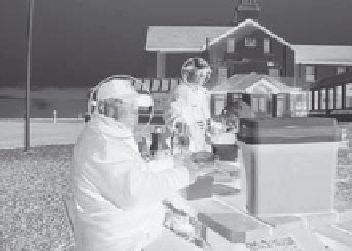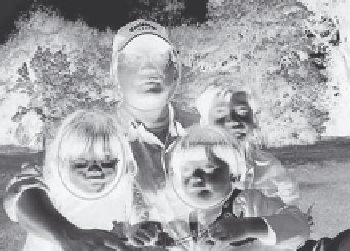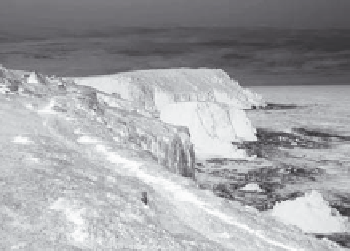Information Technology Reference
In-Depth Information
(a)
(b)
(c)
(d)
Figure 12.4
Three types of images: (a and b) photoswith human images, (c) photo without human images,
and (d) photo with human images and smiling faces (using the smile detection process).
use of an event model allows information to be presented to users in a man-
ner that is independent of media and data source. In the interface various
views of the data (such as those across time, events, or other attributes) are
tightly linked to each other, so that interaction in terms of any one of them
are instantaneously reflected in all the views (for example, selecting an event
by time leads it to be highlighted in the spatial view). This is essential for
maintaining context and helping the user build their own lifetime experi-
ence database.
The user can also display a satellite image and zoom to various levels.
Figure 12.5 shows a split window for two individuals' photos including GPS
locations. Figure 12.6 shows the location logs for two different people with
photos and GPS locations marked on a map where a tracing location was
activated. Figure 12.7 shows the location at increased magnification, using a
satellite image for the photo locations using GPS data.
Currently we have developed a web-based interface to allow the user to
manually load media to the system. First the user needs to log in to the sys-
tem after which they can start uploading all or a selected subset of media
to the system. In our design, each specific piece of media content (such as








